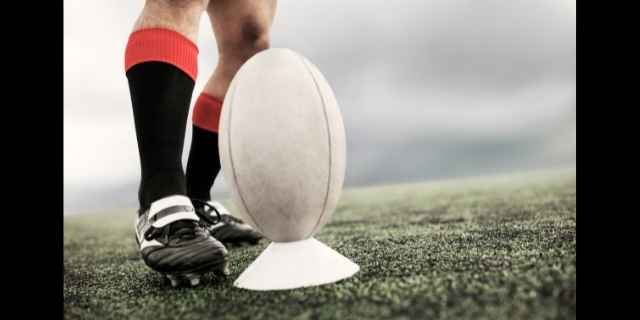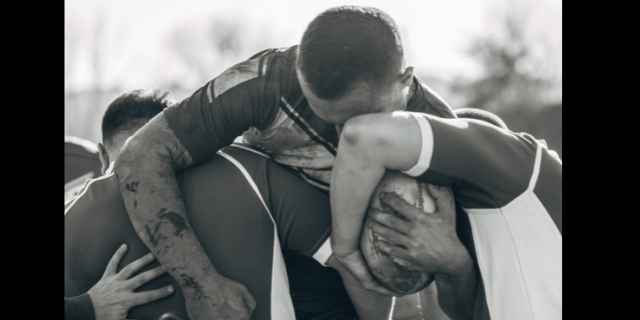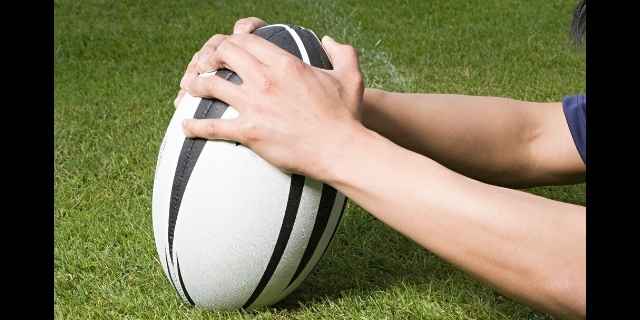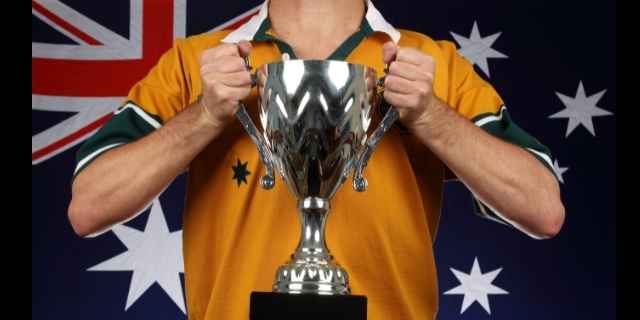Which Australian rugby players are the greatest to have played for the Wallabies?
Who had the greatest skills and contributed the most to Australian rugby?
We’ll start with the fifth greatest Australian player and work our way up to the top. You may not agree with us, but we’ll explain our reasons!
Number #5: Michael Lynagh (Flyhalf)

Michael Lynagh was twenty when he played his first test for the Wallabies.
He had a short apprenticeship behind Mark Ella, who was first-choice flyhalf that year. Lynagh played at inside centre when the Wallabies were unbeaten on their European tour of 1984.
Ella promptly retired from international rugby. The young Lynagh now had the reins at the ten position.
Skillset
Being thrust into the pivotal position might have phased a different sort of player.
But Lynagh already stood out as an unruffled playmaker. He usually made the right decision on a rugby pitch and seemed to have all the time in the world.
He was an excellent flyhalf. Perhaps there were other tens whose skills were as good as his. But Lynagh kept his head under pressure and steered his team through tight matches.
Achievements
One of the most notable examples was the quarterfinal of the 1991 World Cup. In the dying minutes of the match, the Wallabies were trailing to Ireland in Dublin.
The flyhalf took the reins and called a backs move. Lynagh ran in support to take the final pass for the winning try.
Lynagh pulled the strings again as the Wallabies beat the All Blacks in the semi-final.
The final against England was another tight affair. England’s fly half was the solid Rob Andrew, who was an accurate placekicker.
In a close match, Lynagh kept his cool and kicked more points.
Number #4: Tim Horan (Centre)
Tim Horan was selected for the Wallabies in 1989 when he was just nineteen.
When he won his second cap against France in Paris, the youngster scored two tries.
Skillset

Tim Horan played mostly at inside centre. But his all-around rugby skills were so good that he also played ten international matches in the outhalf position.
His most eye-catching gift was the ability to hit gaps in the line at pace. As he got older, his upper-body strength helped him break tackles and cut through the defensive line.
But he was also a great second distributor, which allowed the Wallabies to play their traditional flowing game.
Achievements
Horan was a vital member of the Wallabies’ run to victory in the 1991 World Cup.
The centre scored four tries and created many others with his vision and accurate passing.
A bad knee injury put him out of the game for a year. Many fans feared he would have to retire completely.
But Horan returned to play in the 1995 World Cup. Australia had a mediocre run of form for a few years but turned things around in 1995.
Horan himself was back to his best in the 1999 World Cup. He played one of his best matches in the semi-final against South Africa.
John Eales lifted the trophy after a victorious final against France. Tim Horan was named as player of the tournament.
Number #3: David Campese (Winger)

David Campese played rugby league in Australia, before switching codes.
The rugby world sat up and took notice of the brash young winger when the Wallabies went on tour to Europe in 1984.
Campese carved up the pitch against England, Wales, Scotland, and Ireland. The winger scored six tries in total as Australia won all their matches.
Outrageous flair
Campese’s skillset was off the charts. He pulled off moves that other wingers wouldn’t dream of.
In a World Cup semi-final against New Zealand, he took off on a slaloming solo run to score a try. But there are other players on our list of greatest wingers who have solo runs on their highlight reel.
That match illustrated what made Campese different. He threw an outrageous over-the-shoulder flick pass for Tim Horan to score another try. Few players would have had the vision.
His trademark move was his distinct sidestep, also known as a goose step. It simply bamboozled defenders and left them grasping air. Here’s a clip.
1991 World Cup triumph
Campo’s greatest achievement was winning the 1991 World Cup with the Wallabies.
He was named Player Of The Tournament. His total of six tries was only equalled by Frenchman Jean-Baptiste Lafond.
Number #2: George Gregan (Scrumhalf)
George Gregan’s international career spanned an astonishing thirteen years from 1994 to 2007.
He was selected for the Wallabies at twenty-one. It was his fourth match that produced a moment that is still iconic as one of the greatest tackles in the sport.
Australia was playing New Zealand in the Bledisloe Cup. Jeff Wilson, the blonde All Black winger, was diving across the try line.
The five-foot-eight scrumhalf tackled him in mid-air and put him into touch. Here’s a clip.
Skillset
Gregan’s trademark skill was a laser-focused pass of unerring accuracy.
He kept his forwards playing at a high tempo and seemed to pick the correct runner off a ruck every time.
Gregan also had great acceleration and an eye for a sniping break.
Although he slowed down in his later years, his pass was still so much better than the alternatives that he remained first choice for the Wallabies.
Achievements
Geroge Gregan was the starting scrum half for Australia in the 1999 World Cup.
The Wallabies beat South Africa, the defending champions, in the semi-final. They then ran up a commanding score in their win against France to lift the trophy.
Four years later, he captained the Wallabies on their run to the final of the 2003 World Cup. This time, they were downed by England in a tight match that went to extra time.
Greatest Australian Player: John Eales (Lock)

Our pick for the greatest Australian rugby player is lock and captain John Eales.
John Eales was capped for the Wallabies in 1991 when he was just twenty years of age.
Despite his height of six foot seven, he was extraordinarily athletic for a lock forward. His jump and immaculate timing made him one of the greatest lineout operators in the sport.
Eales made the Australian lineout a source of certain possession. But he also terrorized the opposition by disrupting and stealing their ball.
He was rock solid in the scrum and maul. But aside from the lineout, his most eye-catching contributions were around the pitch.
He read the game superbly and seemed always to be in the right place on the field to nullify the opposition and support his own attackers.
The place-kicking lock
It’s rare for forwards to kick penalties in rugby. Eales was the most notable exception.
Eales kicked for his club but he wasn’t always the main kicker for the Wallabies. However, he slotted 65 penalties and conversions in international matches.
That includes a match-winning penalty when the clock had gone red in the 2000 Bledisloe Cup. Here’s a clip.
Achievements
In Eales’ first international season, he started in the World Cup final of 1991. Australia beat England to lift the trophy.
Eight years later, Eales was captain of the Wallabies when they beat France in the 1999 World Cup final.